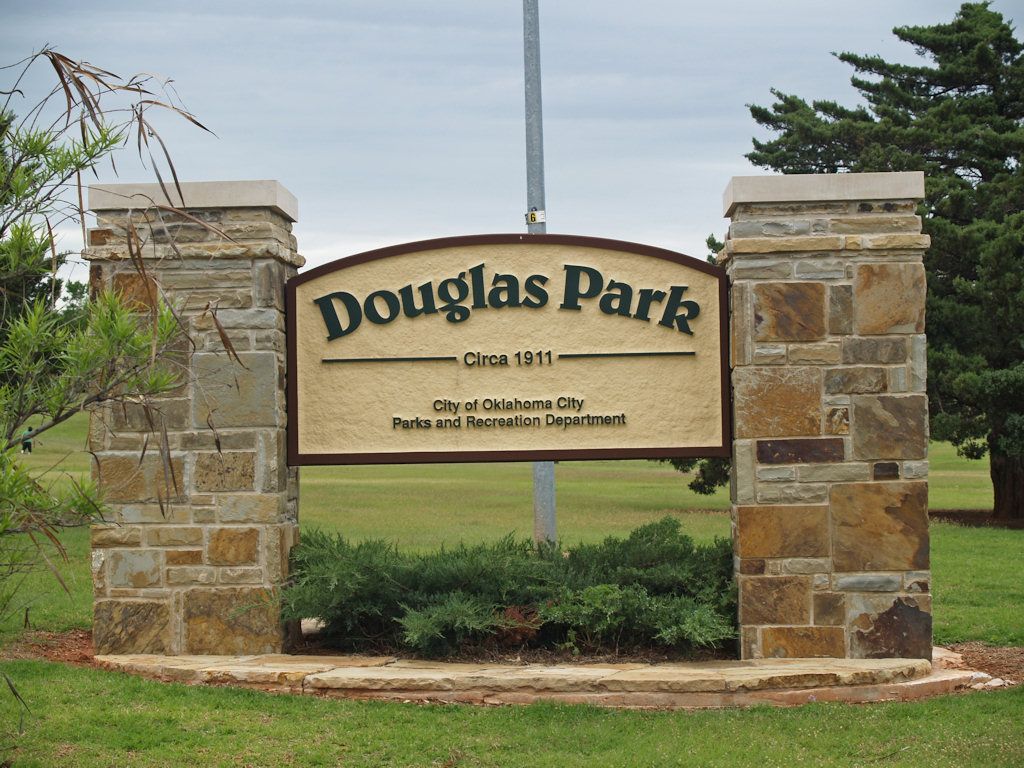I've been working on a comprehensive look at all of the north side's old neighborhoods. So far here's the map that I've put together.
I had to use abbreviations or shorthand to fit labels in the tiny spaces, but here are the neighborhoods spelled all the way out starting east to west: Automobile Alley, Midtown, Heritage Hills, Mesta Park, Uptown, Jefferson Park, Paseo, Crown Heights, Central Park, Edgemere, Western Avenue, Putnam Heights, Asian District, OCU, Gatewood, Plaza District, Classen-Ten-Penn, the Gay Enclave, Venice Boulevard, Crestwood, Miller, Reed Park, Linwood, Drexel Place (I think?), and there's a nice historic hood I came across that NW 19th goes through between I-44 and Portland. Except for Central Park, Drexel Place, and Classen-Ten-Penn (which we may as well call Beirut), most of these neighborhoods are surprisingly nice and well-kept.
I think that I've discovered a few new things since taking this comprehensive look at OKC's neighborhoods.
1. The main thing being that there appears to be two separate concentrations of neighborhoods, one centered around NW 23rd and Classen, and another centered around NW 23rd and May.
2. Another thing I've discovered is that the western concentration of neighborhoods go mostly unnoticed and don't get the same attention that the north-central cluster do, but are surprisingly well-gentrified (Miller, Crestwood, etc).
3. We appear to be getting back to our urban roots, and we see the reemergence of several "strip districts" such as Western Ave, Uptown, and the Plaza. There is potential untapped up and down May Ave for another of such a strip to develop.
4. The northwest and north central clusters of neighborhoods are divided by mostly un-gentrified and unidentified/unlabeled neighborhoods that lack an identity and lack organization. It's not all bad though. There are even some areas such as along Youngs Blvd where you see contemporary homes being built, large brick apt bldgs converted into entire new homes, and other beginning signs of gentrification. You still don't see very many examples of the vernacular building stock being remodeled however, which typically is a result of organization and neighborhood identity.
5. Mapping these hoods out can enable the city to develop a strategy to best continue the gentrification of the inner north side. The goal should be a unified city, rather than the patches of good and bad that currently exist. The city can do a lot more to demarcate neighborhoods, a lot more to unify, and so on.
The purpose of all of this is to identify what we have and hopefully develop a comprehensive infill and restoration strategy to make the most of the north side, where a lot of work remains to be done. It would be really cool to see a movement along these lines develop within the city. There also needs to be a comprehensive brand for the entire area between downtown and I-44, and unfortunately "Midtown" is taken by a specific district. Potential candidates are "The Heights" or "Mid City" or "Short North" or something like that. If the city recognizes these districts and sets in motion a plan of action backed up by public improvements that are also branded under this movement (very important), you will see major results.




 Reply With Quote
Reply With Quote





Bookmarks